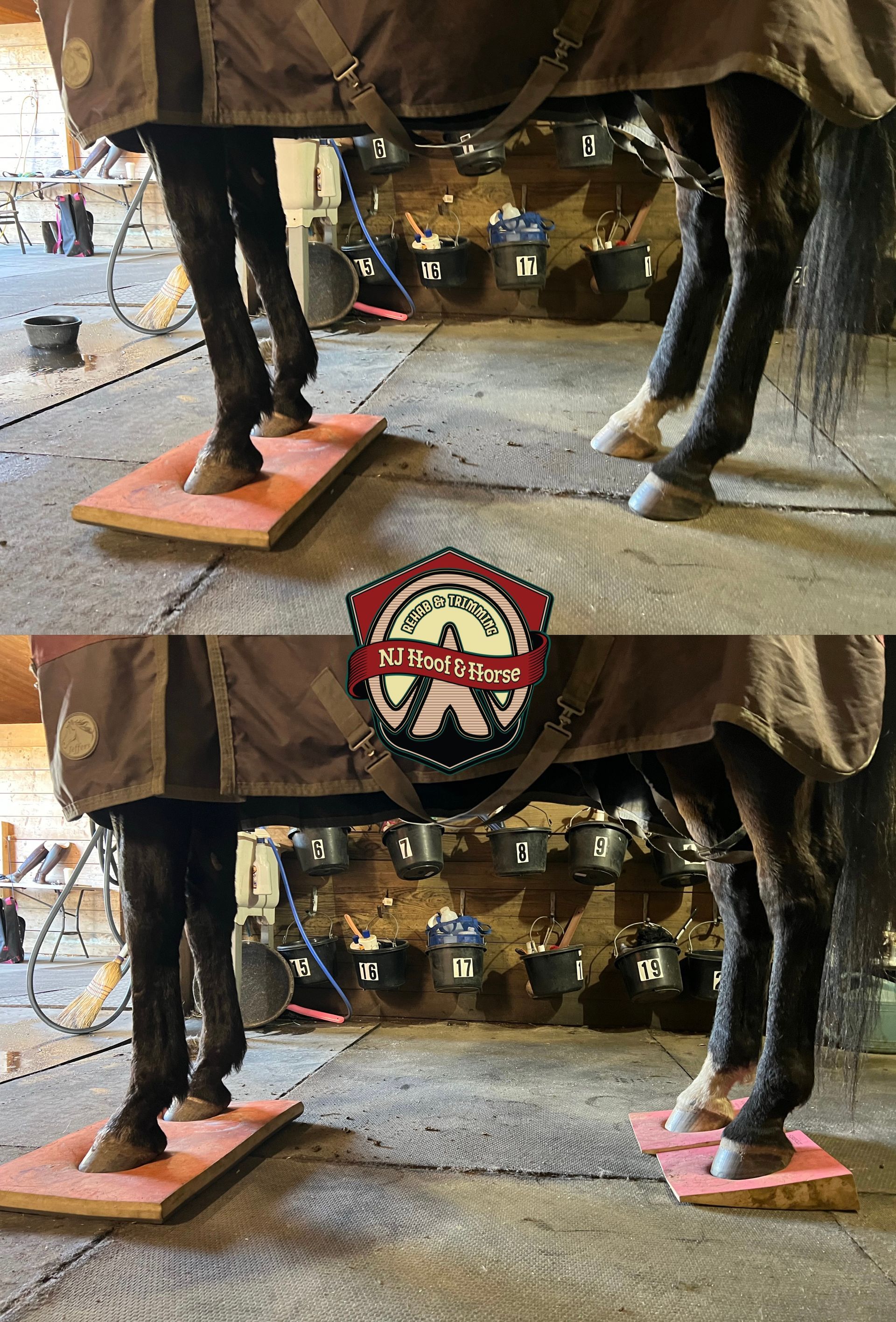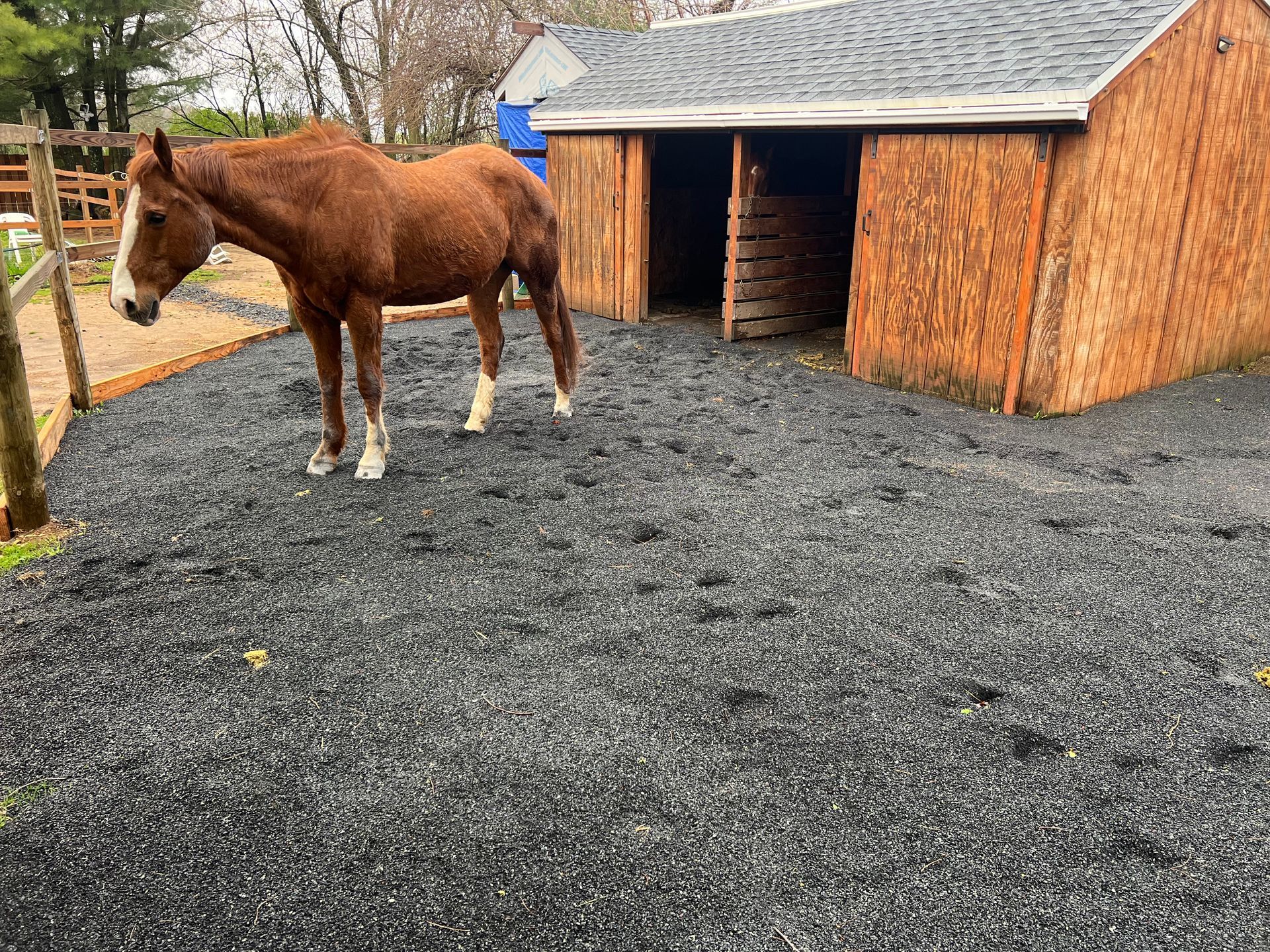Mustang hooves: An ideal model for domestic horse hooves?
Ok, so I’ve given this topic a lot of thought since im constantly seeing both owners and professionals debate whether we should trim domestic horse hooves as mustang hooves or not. Here’s my five cents with what common phrases I agree and disagree with.
1. We should always trim domestic horse feet like wild mustang feet.
Should we really? I rehab and trim so many horse feet that have so much pathology in them, that if we were to trim them in the shape of a wild mustang foot they’ll be dead lame. True, we should always have the natural mustang foot in mind and strive toward its function, but we should never force a foot a way it doesn’t want to grow. And it may not be because the horse doesn’t want to grow a foot like that… it may be because there’s so much pathology and damage that growing a “mustang foot” is impossible! So should we trim a domestic hoof like a wild one? I’ll get to that later!
2. All mustangs have good feet because of genetics. Making a mustang foot a model for the domestic horses is stupid.
I think this kind of thinking is very “boxy” and “limited”. Sure wild horses have good genetics and the bad/weak horses get eaten, but have you ever wondered what they eat and how much they move compared to domestic horses? We can’t just limit our thinking by saying that the genes are the only thing involved in domestic hoofcare problems. We often want to blame others, but never ourselves. So why do we always blame just “bad genes” for our horses’ hoofcare problems and not ourselves for the way we limit their movement, feed them bad food? Not to mention the way we stress them out when riding them, keeping them stalled or alone without a herd, creating even more toxemia in their system. I’ve seen and worked on laminitic domesticated mustangs and I’m confident that we’re creating the problems, not them.
3. Mustang roll is a term used by crazy barefooters. It’s useless.
Then why does it help hundreds and thousands of horses every day? I’m not a crazy barefooter, I do shoes too! But the way this little tweak in addressing the hoof wall changed so many horses soundness levels is unbelievable! When we dig deeper in how the hoof functions, we’ll understand the real meaning behind a “mustang roll”. Basically it’s there to get rid of peripheral loading (get rid of loading only the walls). The way it helps the hoof become more functional is incredible! How aggressive the bevel is will depend on the situation, hoof health, soundness of the horse and of course the approach and trimming technique used by the hoof care provider.
4. Wild horses don’t get hoof problems.
Sure they do. Just look at the brumby horses study done by Brian Hampton PhD. He noticed how exposure to high sugars resolved into a lot of laminitis episodes in the wild horses. This just proves again and again the effect that diet has on our domesticated horses. We are the only ones that can control what they eat!
5. The wild mustang hoof model is a great thing to keep in mind when trimming domestic horses.
Yes! One hundred percent!! This doesn’t mean to trim the hoof the same exact shape and size just like the wild horse hoof model in one go (sometimes, with a healthy foot that’s the case, but it’s rare). The reason why we even have the wild horse hoof model is to compare it with domestic hooves and see how can we improve the domestic hoof function. A lot of things in nature are pretty healthy and symmetrical, including the wild horse hoof model. We strive towards soundness, function and symmetry. Only then can we achieve good results with our domestic horses. Keeping in mind the pathology and distortions the hoof has, we should trim a hoof based on the conformation of the horse and it’s needs, and never based on a picture in a textbook.
Very broad topic. We can go on for hours discussing this. Do you agree with the given points?
Denys Antonenko
https://www.facebook.com/groups/403518701681330/permalink/587801686586363/

